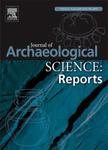版权所有:内蒙古大学图书馆 技术提供:维普资讯• 智图
内蒙古自治区呼和浩特市赛罕区大学西街235号 邮编: 010021

作者机构:Penn State Univ Dept Anthropol 403 Carpenter Bldg University Pk PA 16802 USA Binghamton Univ Dept Anthropol 4400 Vestal Pkwy Binghamton NY 13902 USA
出 版 物:《JOURNAL OF ARCHAEOLOGICAL SCIENCE-REPORTS》 (J.Archaeol. Sci. Rep.)
年 卷 期:2019年第23卷
页 面:166-177页
学科分类:0601[历史学-考古学] 06[历史学] 07[理学] 0712[理学-科学技术史(分学科,可授理学、工学、农学、医学学位)]
基 金:National Geographic [HJ-107R-17] Binghamton University
主 题:Object based image analysis template matching automatic feature identification remote sensing shell rings LiDAR American Southeast
摘 要:One persistent archaeological challenge is the generation of systematic documentation for the extant archaeological record at the scale of landscapes. Often our information for landscapes is the result of haphazard and patchy surveys that stem from opportunistic and historic efforts. Consequently, overall knowledge of some regions is the product of ad hoc survey area delineation, degree of accessibility, effective ground visibility, and the fraction of areas that have survived destruction from development. These factors subsequently contribute unknown biases to our understanding of chronology, settlements patterns, interaction, and exchange. Aerial remote sensing offers one potential solution for improving our knowledge of landscapes. With sensors that include LiDAR, remote sensing can identify archaeological features that are otherwise obscured by vegetation. Object-based image analyses (OBIA) of remote sensing data hold particular promise to facilitate regional analyses thorough the automation of archaeological feature recognition. Here, we explore four OBIA algorithms for artificial mound feature detection using LiDAR from Beaufort County, South Carolina: multiresolution segmentation, inverse depression analysis, template matching, and a newly designed algorithm that combines elements of segmentation and template matching. While no single algorithm proved to be consistently superior to the others, a combination of methods is shown to be the most effective for detecting archaeological features.